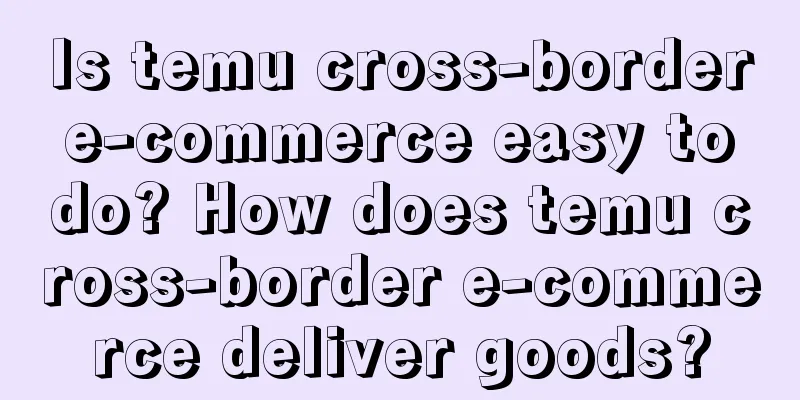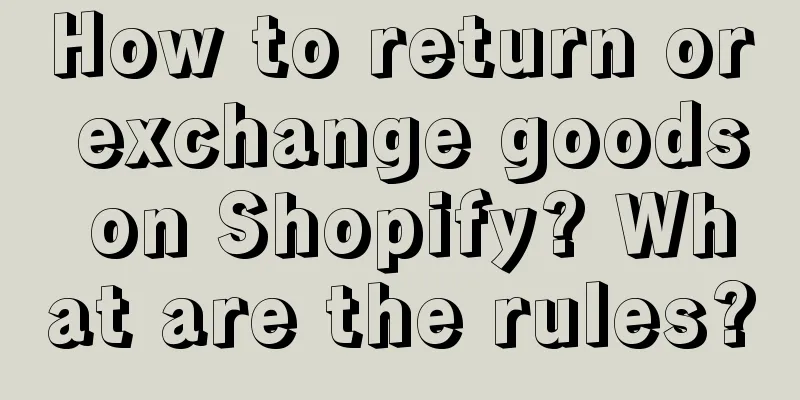Brand start-up stage (0-1 stage): How to do content marketing with a low budget?

In the consumption upgrade in recent years, with the rise of new lifestyles, the extension of new aesthetic formulas, the coverage of new digital retail, and the birth of new social media, those simple and repetitive contents have lost the attention in the media monopoly era, while those new and cutting-edge brands that consciously and actively interact with content and a group of relatively indifferent traditional brands are standing on the competition stage at the same time. In order to analyze the current situation, I have listed a matrix diagram. I believe that brand content can be analyzed from two dimensions: one is the openness and professionalism of the content, and the other is the concentration and democratization of the content dissemination and communication channels. The more open the content is, the less self-centered the brand is, and the more user-oriented it is, empathizing with consumers through scenarios, IP, characters, and stories. The more democratic the channel is, the more the brand will focus on a refined omni-channel grass-planting matrix + vertical circle multi-touchpoint user communication, with short links and fast conversions, driving the brand through products, experience, content, and word of mouth. On the other hand, the corresponding advertising model is that of big media, big channels, and big stars, which burns money. This model has long links, slow conversions, and relies on one-way communication between brands and users. By analyzing the brands on the market through these two dimensions, we get the following industry matrix: Industry Matrix Chart of "Breaking Word of Mouth" For example, Guanxia, a new star that has emerged in recent years, did not have a Taobao store or an offline store in its early days. Its only entry point was the official account mall. It is more like a master of the previous era: although the official account is no longer a new channel, this does not affect its immediate sales every time a new product is released on the official account mini program. This is because it uses the thinking of magazine topic selection to operate the content of its official account. In terms of perception and content, it is highly ornamental and readable, and drives customer acquisition with high-quality content. Guanxia has paid enough attention and investment in content since the brand was born, and this investment has gradually generated compound interest, like a snowball. You can feel the content of this brand on Bilibili, Xiaohongshu, and WeChat official accounts. It is very high-end and attentive. Another rising star is Santonban, whose content is more open. Its founder once mentioned that unlike other brands that output content, their official account must have good content before it is pushed, otherwise it will not be released. At the same time, many of Santonban’s Xiaohongshu content comes from users’ own dissemination, and the repetition rate is very low. At the same time, Santonban continues to connect with more interesting brands, spaces and life players to create a cooler new world of coffee with users. However, Santonban is not yet a top player. The most powerful brands are in the northeast corner. They have a more open ecosystem and content. They do not spend money on advertising or use celebrity endorsements, but have established a solid and stable emotional connection with consumers. For example, Lululemon uses the community as the driving force of its brand growth model. Lululemon's nearly 700 offline direct-sale stores around the world have become the main scenes for brand communication. Store ambassadors have become decentralized communicators, store educators have become executors of communication, and store community activities are the greatest sense of ritual for brand communication. Few brands can match the high degree of content openness. In daily life, when you open the social media platforms of most brands, what do you see? Social responsibility, company events, celebrity endorsements... Although some designs and aesthetics are good, I always feel that something is missing, and what is missing is actually a real feeling. But on Lululemon's website, you'll see a lot of photos and stories of users and employees, real people sharing real and product stories. A brand with strong personalized connotation can bring huge fan stickiness to the brand. Think about Guanxia’s moat, is it oriental fragrance? Is Sandunban’s confidence its coffee products? Definitely not. China's powerful supply chain has brought about the same origin and homogeneity of products. Any brand can make similar products. Their real moat is the real users behind these brands. They like and believe in this brand and think it is real enough. On a deeper level, these brands have achieved "creating content" and building "user relationships" to gain recognition from users, so that consumers can buy me, remember me, and trust/like me. Therefore, I firmly believe that, in the absence of traffic dividends, whether brands are able to create some content that users actively spread, thereby reducing brand customer acquisition costs and ultimately achieving profitability, is a new task for brands in the Internet era. As content has become one of the moats of future brands, let’s take a closer look at how brands can create content communication. The model I summarized is divided into three steps: "Breaking Word of Mouth" Content Marketing Creation Model for Brands at Different Stages 1. Brand Startup (Phase 0-1): How to do content marketing with a low budgetMany brand founders think their projects are particularly big when everything is still 0. Of course, they can think so strategically, but it is not necessary in terms of tactics and execution. Because when the brand is in the 0-1 stage, your cash, resources and manpower are definitely limited. It is simply too much to start with many product lines, omni-channel distribution, and top anchors to promote products. You should know that almost no brand can reach the top of the pyramid in one step. Most of the time, what we see is that they climb up step by step. Everyone evolves slowly from the bottom of the pyramid. Some companies evolve faster, some slower, but more than 95% of brands in the 0-1 stage will be stuck in the "consumers get to know you" stage. For new brands, what is more urgent than brand dreaming is how to become famous in poverty. Most of them actually rely on small steps and penetration to build up, accumulate the first batch of users and cash flow, and then feed back to marketing. So, to overcome the initial recognition challenge of a new brand, I think there are four things you need to do well in content marketing: (1) Create attention; (2) Create credibility; (3) Promote product iteration; (4) Promote customer acquisition. Focusing on the above four points, in the process of serving some new consumer brands in recent years, I found that those new brands that "growth exceeds that of competitors in the same period and have good profit growth" have all done well in the following four points without exception: The first point is to seize the right to speak in the category: new brands must clearly convey their differentiated value and concentrate resources to build credibility to help new brands overcome initial cognitive challenges and win trust. The second point is to give the brand stories and life: grab the user's attention through moving stories and give the product and brand a soul. The third point is circle consensus: before breaking the circle, a new brand must first form a circle. The circle consensus is divided into two parts: selling products or experiencing in the circle, and accumulating circle word-of-mouth consensus. Fourthly, take advantage of the new media: seize the trend dividend and let the brand stand at the forefront. 2. How can new brands seize the right to speak in the category?Strictly speaking, a startup brand is still just a product brand. The value of the brand to the product itself is very limited. What we need to do at this time is product marketing, to amplify product power, pursue sales conversion, and let the product survive in the market first. Why do some brands in the same industry, standing at the same starting line, have high information transmission efficiency while others have low information transmission efficiency? It all stems from the understanding of a commercial keyword: seizing the right to speak in the category. As mentioned in the book "Category Strategy", the success of almost every "brand" is first and foremost a success in the category. So I put "category discourse power" first. Consumer decision-making is category first and brand second. So-called thinking in terms of category and expression in terms of brand. In many fields, the mental position of category, once formed in the minds of consumers, will have very strong sustainability. Which brands in the new consumer market have already gained the right to speak in terms of product categories? When we think of high-end tea, we think of Xiaoguan Tea; when we think of meal replacement milkshakes, we think of Wonderlab; when we think of nourishing fresh bird's nest, we think of Xiaoxiandun; when we think of sugar-free sparkling water, we think of Yuanqi Forest; when we think of tiger skin chicken feet, we think of Wang Xiaolu. Their "first-mover advantage" and the "cognitive bonus" of users determine whether the brand can break through 0-1 and enter a longer-term competition. So how can we seize the right to speak in the category in content dissemination? I have summarized four points: "Breaking Word of Mouth" seizes the discourse power model of the category 1. Breakthrough in the hot product strategyFor new brands and new categories, focusing on a single product is a better way to establish clear cognition in the minds of consumers than using multiple product groups. In order to ensure that the brand occupies the most valuable part of the category and also enable the new category to develop rapidly in the early stages of development, the key is to concentrate firepower and focus on a single large product in a category, and to create its own characteristics through differentiation, micro-innovation, and new channels. When a brand has limited resources and consumers receive too much information, the product needs to be sharp and repeatedly tell consumers who you are; for example, Wonderlab's little blue bottle, Lin Qingxuan's camellia essential oil, Dyson's hair dryer... They are all pouring their superior resources into "explosive products", creating products that will make users scream, so that they can quickly gain market attention, trigger consumers to plant grass, share and spread on social platforms, form an "Internet celebrity" effect, and then boost brand awareness. This way, the cost of promotion can be reduced by at least half. 2. Delivering value anchorsWhat is a value anchor? It means you need to clearly tell consumers: what are you? How are you different? Why do you think so? What are you? The answer is the "category" to which the brand belongs. Categories can efficiently meet the needs of consumers. It is very important to find the value anchor point under the differentiation of category competition value cognition. What is the difference? This corresponds to the competitive difference of the brand. What is the core advantage of your product? What kind of value can it bring to users? What is the biggest difference between you and your competitors? How do we know? Correspondence is the evidence of brand differentiation, which is called "credentials" or "trust clues". Just like eight masters offering you a cup of good tea, a distinguished guest has arrived, Xiao Guan Tea. For size-free underwear, choose Ubras. For nourishing fresh stewed bird's nest, choose Xiao Xian Dun. We need to continue to talk about these contents, which is what we should talk about in the early stage of the brand. All "communication-building of trust" begins with remembering who you are and what you represent, and then comes familiarity-trust-purchase. Let’s look at this through a simple case. After the rise of Xiaoguan Tea, tea brands were divided into two: Xiaoguan Tea and other brands. From "Xiaoguan Tea, a masterpiece" to "Dear guests, Xiaoguan Tea", Xiaoguan Tea has accurately aimed at the "high-end". In terms of content marketing, how did Xiaoguan Tea do communication output during the brand establishment stage? In an interview with Sister Mulan on her program "Telling Chinese Brand Stories Well," Mei Jiang, vice president of Xiaoguan Tea, told me about the brand's content communication strategy. First, Xiaoguan Tea, a masterpiece. In fact, what was the point of differentiation that Xiaoguan Tea was looking for in the first stage of brand establishment? Why is Xiaoguan Tea's tea good? Why is it expensive? Why is it a high-end tea? It needs a support point, so when Xiaoguan Tea entered the tea market, it did a very important thing: to set a standard for good tea for users. There are hundreds or even thousands of types of Chinese tea, but what is a good product? Most consumers don’t understand. How does Xiaoguan Tea help users establish such a standard? Xiaoguan Tea spent 4 years to establish such a standard for the brand in the beginning to help users find a good product. Finally, Xiaoguan Tea found a master. The Xiaoguan Tea team found that for each type of tea, the country will have an intangible cultural heritage inheritor in order to protect its production skills. It represents the highest level in the field of tea. Xiao Guan Tea wanted to bring together these top standards and bring out their masterpieces to see if they were the standard for good tea. That’s why we have something like “Xiao Guan Tea, Masterpieces.” It’s a product standard, meaning that all of Xiao Guan Tea’s classic products are masterpieces of masters. Second, it is also a standard for user cognition. What is good tea? Masterpiece is good tea, which is equivalent to a core differentiation support point at the material level of the brand. When the Xiaoguan Tea brand has gained a certain degree of widespread recognition, "A distinguished guest has arrived, Xiaoguan Tea" is a brand that promotes a scene, that is, "Xiaoguan Tea, a masterpiece by a master". Do you know what is different about Xiaoguan Tea? It is a masterpiece by a master, a representative work of a master. Then why is it used? "A distinguished guest has arrived, Xiaoguan Tea" is actually an upgrade process. Because when a new brand enters this industry, you have to tell who you are and what makes you different. Then you tell users why you can use it. At different stages, there are still relatively large differences in the content and dissemination of Xiaoguan Tea. In the first stage, it is all about this leaf. What is the difference between Xiaoguan Tea products and why is it worthy of your trust? What is its differentiation point? So the first advertisement that Xiao Guan Tea put on CCTV was a piece called "Looking for Tea Pieces". That advertisement was actually a pure documentary film, which took about 20 days to shoot. Xiao Guan Tea "Looking for Tea Pieces" advertisement During this process, Xiao Guan Tea went to the upstream sources of all tea making and talked with these masters: How is good tea made? What are the standards for good tea? What are Xiao Guan Tea's own ideas and persistence in making tea? After it was edited, it was aired on CCTV. This set a precedent to some extent, by airing a three-minute documentary-like advertisement on CCTV on a large scale. The result was unexpected, the effect was very good. Why was it so effective? Because it was real, and made everyone feel the uniqueness of the brand product. So in the first phase, Xiaoguan Tea adopted this documentary-like format, a three-minute long content advertisement, and launched it on CCTV on a large scale, quickly completing the brand education. Later, Xiaoguan Tea produced a series of content in a similar format to explain how the upstream of the brand is done, how tea is made, how tea sets are made, and what kind of persistence Xiaoguan Tea has in quality, so as to truly show consumers some of the things behind it. Therefore, high-end tea is a basic value of Xiaoguan Tea. Through the value anchor of "masterpiece", it sets a hook and a certificate of trust that consumers can understand and become interested in as soon as they hear it. When the brand is promoted to the public, it ensures that the brand positioning information is disseminated when consumers first come into contact with the brand. 3. Spread the focusFocus is an instant scene of a targeted group of people, with product focus, crowd focus, scene focus, consistent content to the outside world, and then wide dissemination. Focus is not being conservative. It means knowing what you want and what are the useful components of a brand. Changing your mind frequently will only waste resources and even lead to disasters along the way. For example, when OATLY oat milk first entered China, it created five focuses for potential communication around the "oat milk" category:
In this case, you may have done 10 things, but you only need to tell others that there are 4 or 5. Keep some for consumers to explore, interact with, and play with you. Don't deprive them of their fun. This is very important. Therefore, the brand should be focused on a "point", then presented in the most extreme form, and then widely disseminated after entering public opinion. Only when the brand is fully displayed can consumers get a more three-dimensional brand recognition. 4. Repeat, repeat the communicationThere was a classic question in the marketing field: "Why do those well-known brands continue to advertise?" Before answering this question, I would like to ask everyone a question: "Do you still remember who was the advertiser of the first advertisement of Papi Jiang that was auctioned for 22 million yuan?" After thinking for a few seconds, you may have forgotten that the advertiser is called "Lirenlizhuang". This news was very sensational at the time, and if you paid a little attention, there is no reason not to know the name of this advertiser. But a few years have passed, and the name of Lirenlizhuang rarely appears in your circle again. Even though this brand has gained popularity on the entire network and has not been repeatedly displayed, it still cannot escape the fate of being forgotten. This phenomenon reveals that the essence of brand communication is repetition. Doing simple things repeatedly is the brand effect. The repetitive elements here are fixed and explicit: First, the content that the brand needs to repeat. It may be a certain concept, a certain product, a sentence, or a certain function point. The content elements must be clear; Second, the user must be clear. To whom should the repetition be directed, a specific circle of people that can be reached. Don’t say that the user is everyone. If everyone is the target, there will be no target. There must be a specific user group; The third is the repetition of time. It must be in a certain period or a very long period of time, spreading firepower to carry out a saturation attack on the user's mind. For example, Heytea’s initial “inspiration” has been a core value of Heytea for a long time in its products, packaging, slogans, and external publicity. Therefore, a series of brand content is constantly superimposed around this concept, with highly focused brand content and extensive mass communication coverage. For example, Nestle has never boasted about its lofty coffee concept, but has only adhered to the slogan and basic value of “tastes great” for decades, which is enough to sell affordable instant coffee all over the world. There is also Ma Liuji hot and sour noodles, which was made popular by Zhang Lan's live broadcast. Before Ma Liuji, what brand can you think of when you mention hot and sour noodles? With the melon that turned 720 degrees and then reversed again, Ma Liuji seemed to have suddenly appeared in front of netizens. Now, hot and sour noodles = Ma Liuji. The reason behind Ma Liuji's endorsement of the hot and sour noodles category is also the result of repeated publicity: doing the same thing again and again - gossip + asking you to buy hot and sour noodles. All the advertising expenses spent by a brand are accumulated into a sentence, or even a sound or a symbol, which is the brand asset. Why can't many companies achieve repetition? On the one hand, there is no planning, and many decisions are made by the boss himself, so the slogan is changed today, the symbol is changed tomorrow, and the content of the promotion is different every time. On the other hand, the boss thinks that if they say the same thing every time, consumers may think it is uncreative, so they have to come up with a big creative idea every time, not realizing that this is a huge waste of resources. So if you want consumers to know you, understand you, trust you, use you, and use you continuously, you need to repeat your brand, your appeal, and your symbol obsessively… The above content is excerpted from the second chapter of my new book "Breaking Word of Mouth: Content-Driven Growth Methodology at Low Cost": "Brand Contentization: How to Create Good Content at Different Stages of a Brand?" Author: Sister Mulan talks about brands Source public account: Sister Mulan (ID: 958702) |
>>: There are many small profitable businesses that big companies don’t look down upon!
Recommend
10,000 stores, hot products, marketing, 9.9, these are the four key words that helped Luckin Coffee surpass Starbucks
In 2023, Luckin Coffee's annual revenue surpas...
Content e-commerce, a panacea for TVB to realize monetization?
Last September, Taobao Live began to enter the &qu...
What logistics does the independent station use for delivery? Which logistics are better?
In the operation of independent stations, choosing...
How often does Shopee's funding cycle occur? What should I pay attention to?
For merchants who have just settled in the Shopee ...
What is the way out for ordinary people to start their own business?
This article starts from the entrepreneurial choic...
Where is Amazon Seller Central? How do I access it?
Amazon Seller Central is a management platform pro...
DeepSeek Gold Rush: Earning a million a day, over 100 million in 20 days, who is being ripped off?
"The DeepSeek business boom brings both oppor...
What is the difference between Amazon's order volume and sales volume? Is sales volume the monthly sales volume?
If you are a novice doing business on Amazon, you ...
Is Lazada reliable? What are its advantages?
When choosing an overseas platform to open a store...
What is Shopee wholesale price? How to set it?
Shopee sellers who want to get explosive sales in ...
How do I sign up for Wish? What are the requirements for registration?
Wish is a leading global e-commerce platform that ...
If you want to enter overseas markets, how can you overcome cultural differences?
When brands go overseas, they often encounter many...
How is it to work as a salesperson at Alibaba International Station? What are the advantages?
There are many people working in sales at Alibaba ...
Can the Amazon Transparency Program be canceled? What is the Amazon Transparency Program?
As a cross-border e-commerce platform, Amazon has ...
How to open a store on Amazon? What are the fees for opening a store on Amazon?
Amazon is a popular cross-border e-commerce platfo...









